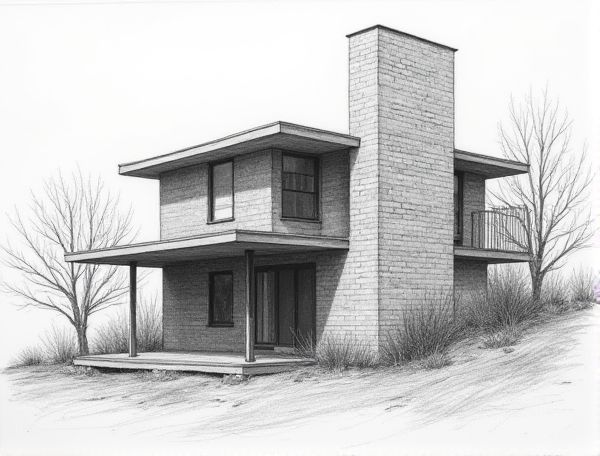
Photo illustration: adaptive reuse home design with exposed original brickwork
Exposed original brickwork in adaptive reuse home design highlights the building's history while adding texture and warmth to modern interiors, creating a unique blend of old and new that enhances your living space's character. Discover how incorporating these authentic elements can transform your home by reading more in the article.
Understanding Adaptive Reuse in Home Design
Adaptive reuse in home design transforms existing structures into functional living spaces by repurposing materials and layouts to fit modern needs. This strategy preserves architectural character while reducing environmental impact and construction costs. By embracing adaptive reuse, your home gains a unique blend of sustainability and personalized style that respects the past and innovates for the future.
The Appeal of Exposed Original Brickwork
Exposed original brickwork adds authentic character and rich texture to home interiors, creating a timeless aesthetic that enhances both modern and rustic designs. This distinctive feature improves visual warmth while showcasing craftsmanship and historical value, increasing property appeal. Integrating exposed brick can also support sustainable design by preserving existing materials and reducing renovation waste.
Benefits of Incorporating Historic Brick Elements
Incorporating historic brick elements in home design enhances aesthetic appeal by adding timeless character and texture that modern materials often lack. These bricks also provide superior durability and natural insulation, contributing to energy efficiency and long-term cost savings while preserving architectural heritage.
Key Considerations for Adaptive Reuse Projects
Key considerations for adaptive reuse projects include assessing the structural integrity of the existing building and ensuring compliance with current building codes and zoning regulations. You must also prioritize sustainable materials and design strategies that enhance functionality while preserving the architectural character of the original structure.
Preserving the Structural Integrity of Old Brick
Maintaining the structural integrity of old brick requires careful assessment of mortar strength, brick condition, and moisture levels to prevent deterioration. You should use compatible materials for repointing, such as lime-based mortar, which allows bricks to breathe and reduces the risk of cracking. Regular inspections and gentle cleaning methods help preserve the brick's durability and aesthetic appeal over time.
Blending Modern Amenities with Historic Features
Seamlessly blending modern amenities with historic features enhances the character and functionality of home design by preserving original architectural details while integrating contemporary technology and comfort. Incorporating energy-efficient lighting, smart home systems, and updated plumbing within classic moldings and vintage fireplaces creates a harmonious living space that honors the past and embraces the future.
Interior Design Tips for Spaces with Exposed Brick
Exposed brick walls add character and warmth to your interior space while serving as a striking focal point. Use soft, neutral tones in furniture and decor to balance the texture and color of the bricks, enhancing the area's cozy ambiance. Incorporating greenery and modern lighting can further highlight the brick's natural beauty, creating an inviting and stylish environment.
Energy Efficiency in Adaptive Reuse Homes
Energy-efficient adaptive reuse homes reduce your carbon footprint by integrating advanced insulation materials, high-performance windows, and energy-saving HVAC systems while maintaining the building's historical character. Incorporating renewable energy sources like solar panels and smart home technologies enhances sustainability and lowers utility costs in these environmentally responsible living spaces.
Common Challenges and Solutions in Exposed Brick Projects
Exposed brick projects often face common challenges such as uneven surfaces, dust accumulation, and moisture issues. Proper sealing and using breathable sealants protect your walls from deterioration while maintaining the brick's natural texture. Addressing these concerns early in the design process ensures your exposed brick remains a striking and durable feature in your home.
Inspiring Case Studies: Adaptive Reuse Homes with Exposed Brick
Adaptive reuse homes featuring exposed brick showcase how historic industrial spaces can be transformed into modern living environments, highlighting the charm and character preserved through original materials. Your design inspiration can draw from these case studies, demonstrating innovative ways to blend rustic textures with contemporary aesthetics for a unique, inviting home.
 homedesy.com
homedesy.com